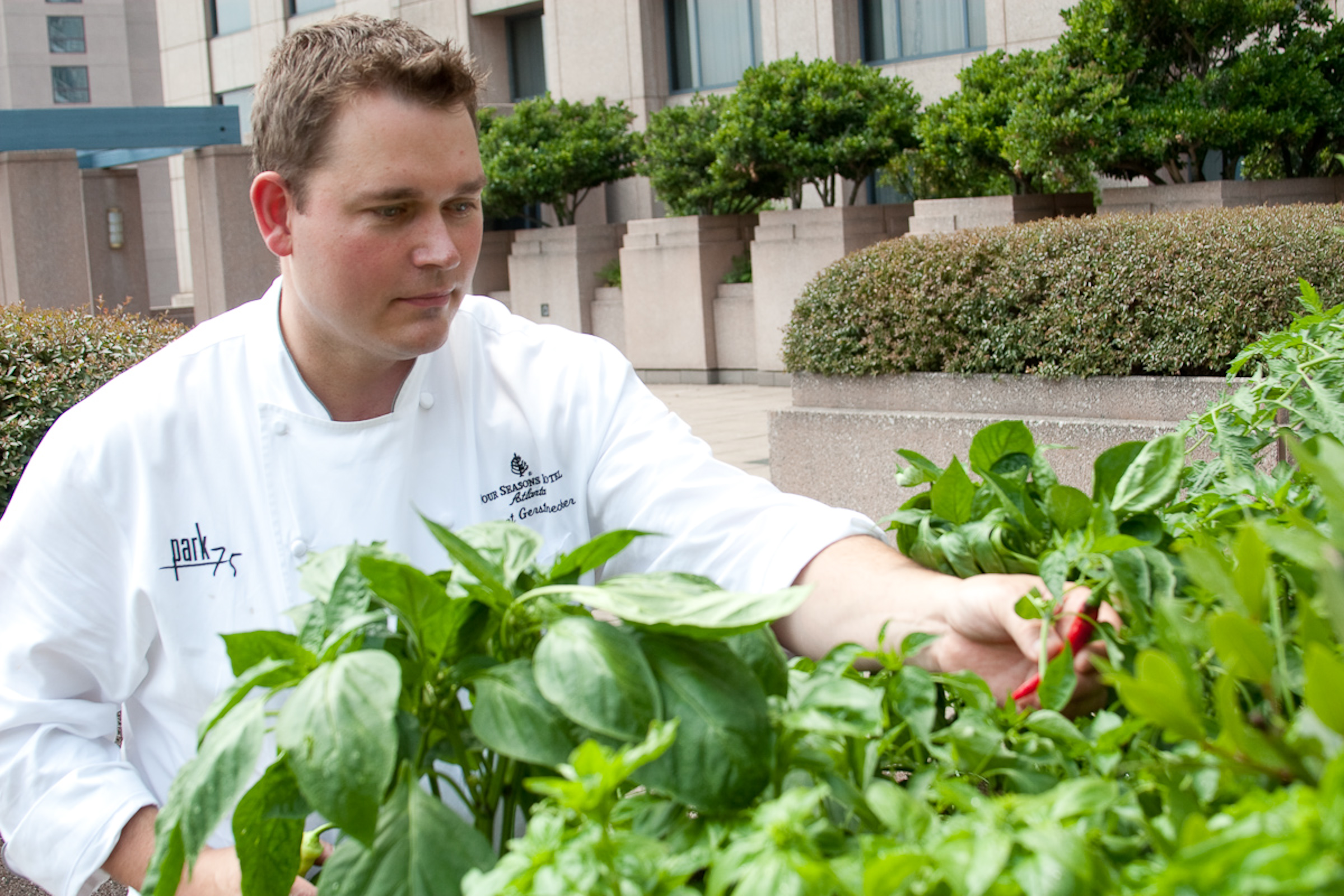First some facts foodies with their faces buried in shaved-truffle foie gras may not be aware of:
Billions of bees have disappeared in the last decade and, even more alarmingly, scientists have no idea why.
Colony Collapse Disorder (CCD) is the name given to the latest, and what seems to be the most serious, die-off of honeybee colonies.
The trickle down effect is devastating. Approximately one third of all the food Americans eat is directly or indirectly derived from honeybee pollination, according to the American Beekeeping Federation (ABF).
There's a reason behind the expression "busy as a bee." The winged little fellas have to go through about a million blossoms to make one ounce of honey.
While scientists scratch their collective heads, it's groups like the ABF, individual beekeepers, the White House bees and guys like Robert Gerstenecker who try to put a little bee in the bonnet of the rest of us as to why it's important to ever care about these insects... even if it stings (ok, enough puns, I promise).
For Gerstenecker's part, he has deduced that the quickest way to draw attention is by educating our palates. So, as executive chef at the Four Seasons Hotel Atlanta, he has launched an awareness campaign by setting up two beehives on the hotel's fifth floor terrace, beside several enormous planters where he grows herbs and vegetables and a variety of edible flowers -- all of which end up in some form or another on diners' plates at the Four Seasons' Park 75 Restaurant.

Chef Gerstenecker, a Canadian who grew up on a farm outside Toronto, moved to the U.S. in 1995 and was appalled that even some of the kitchen staff had never planted anything that grew into something they could eat. As for honey, he quickly discovered, they knew even less. In fact even I, who has been contributing to the New York Times for some 20 years about food, health and other trends, was embarrassed to learn:
Seasonality. Honey harvested in spring is lighter in color and has a sweet taste. Fall honey is darker, and pungent to the palate. This is because the variety of the plant blooming in each season produces different nectars.
Regionality. Honey from downtown Atlanta will taste different from honey in Buckhead, only a few miles away. This also has to do with the soils and microclimates that produce different types of flowering vegetation.
Why the brands taste boring. Brands like Sue Bee manipulate honey to make its taste the same from season to season, from region to region, year after year. The masses like their lives consistent. They brands blend honey from the U.S., Argentina, the Ukraine -- wherever they can get the best deal.
Health implications. The natural liquid from bees contains B6, thiamin, niacin, riboflavin, pantothenic acid and certain amino acids and minerals. It has a healthy Glycemic Index, meaning that its sugars can be gradually absorbed into the bloodstream, rather than the infamous spike effect of processed sugar. Honey contains natural antioxidants. It's a great natural source of carbohydrates. Its natural fruit sugars, fructose and glucose play an important role in preventing fatigue and it's cholesterol-free.
Don't buy it if the label says "organic." Why? Because it's a lie, unless beekeepers can guarantee the bees extract their nectar from pesticide-free plants, which they can't unless they contain the bees in some fenced-over well planted space, as birds are kept in aviaries.
Under chef's watchful eyes and very rarely stung hands, two queen bees and more than 100,000 gentle Italian honey bees live atop the hotel, contributing nearly 200 pounds of wildflower honey that he uses in entrees at the Park 75. The delicate tempura-fried squash blossoms (which come from his home garden and is only available seasonally) are filled with goat cheese and crowned with cherry tomatoes from the hotel's garden, as well as baby zucchini and nasturtium blossoms. It's drizzled with a vinaigrette made with honey and vinegar. It's also used for the salted honey caramels, and on a cheese and house-made Charcuterie plate.
So, yes, buzz on over on rapidly flapping wings.